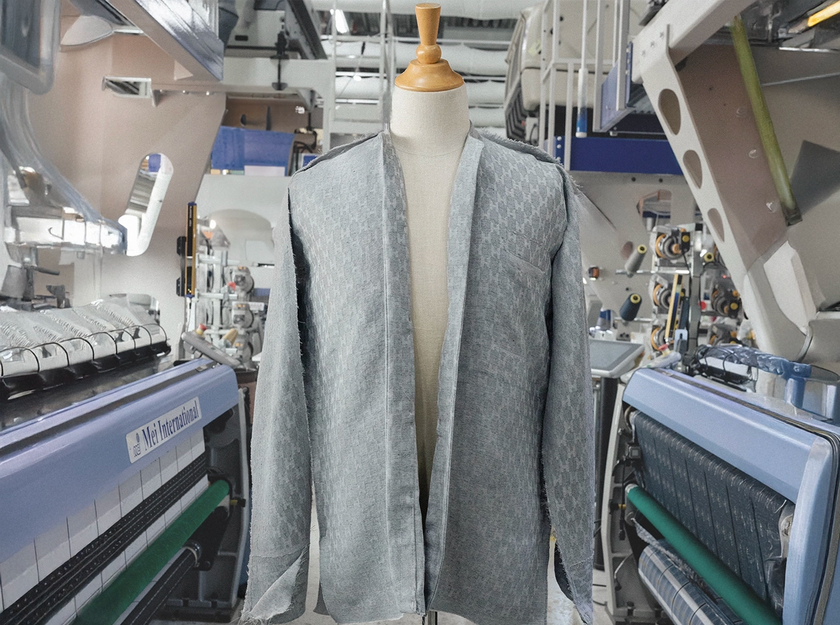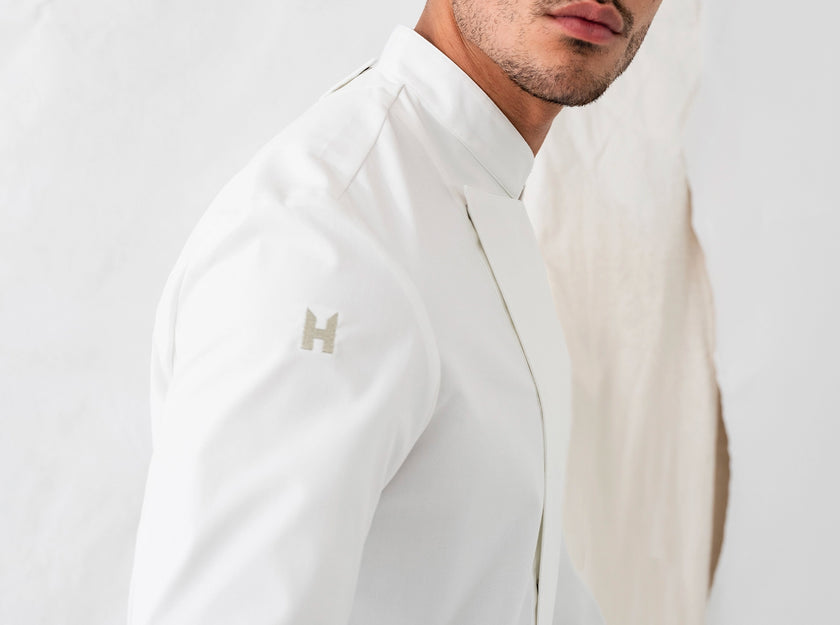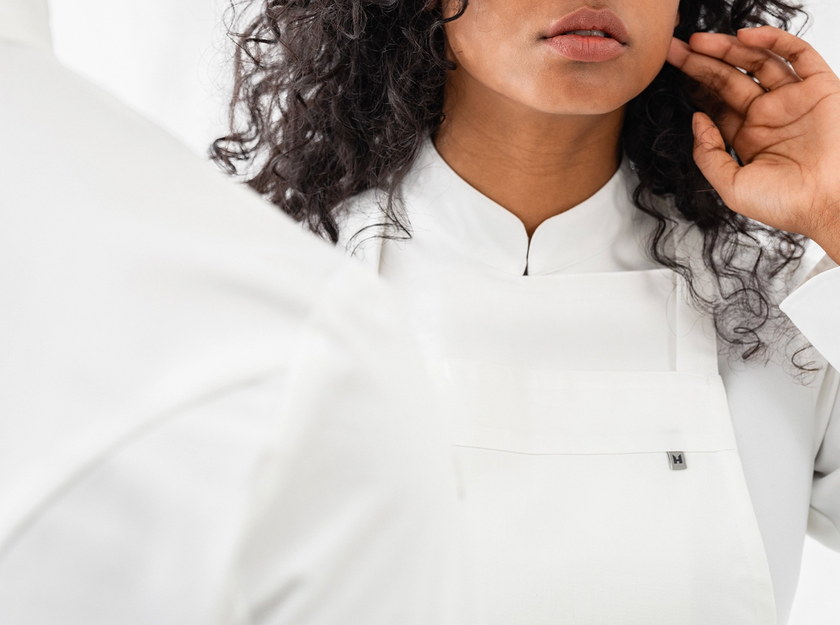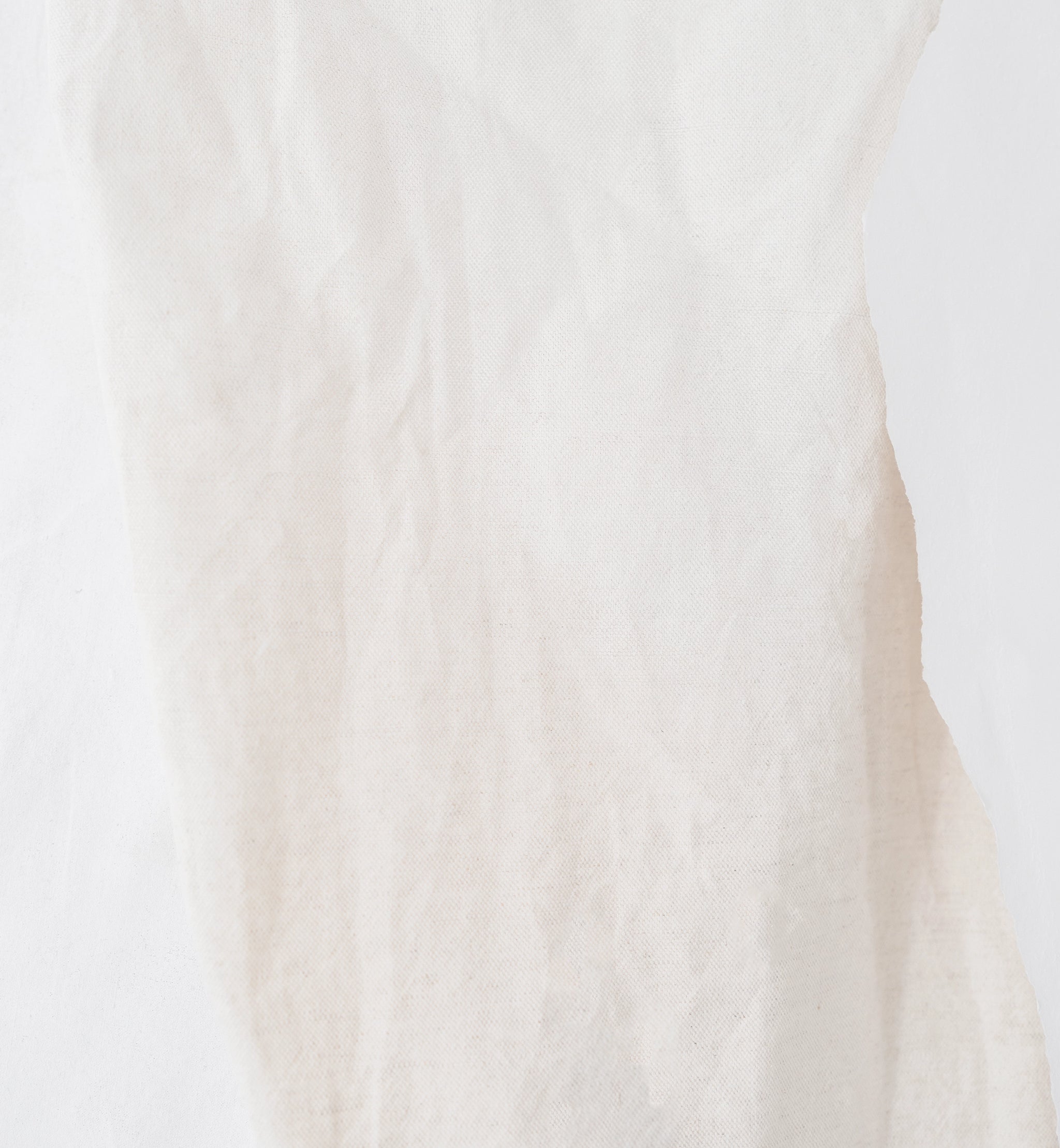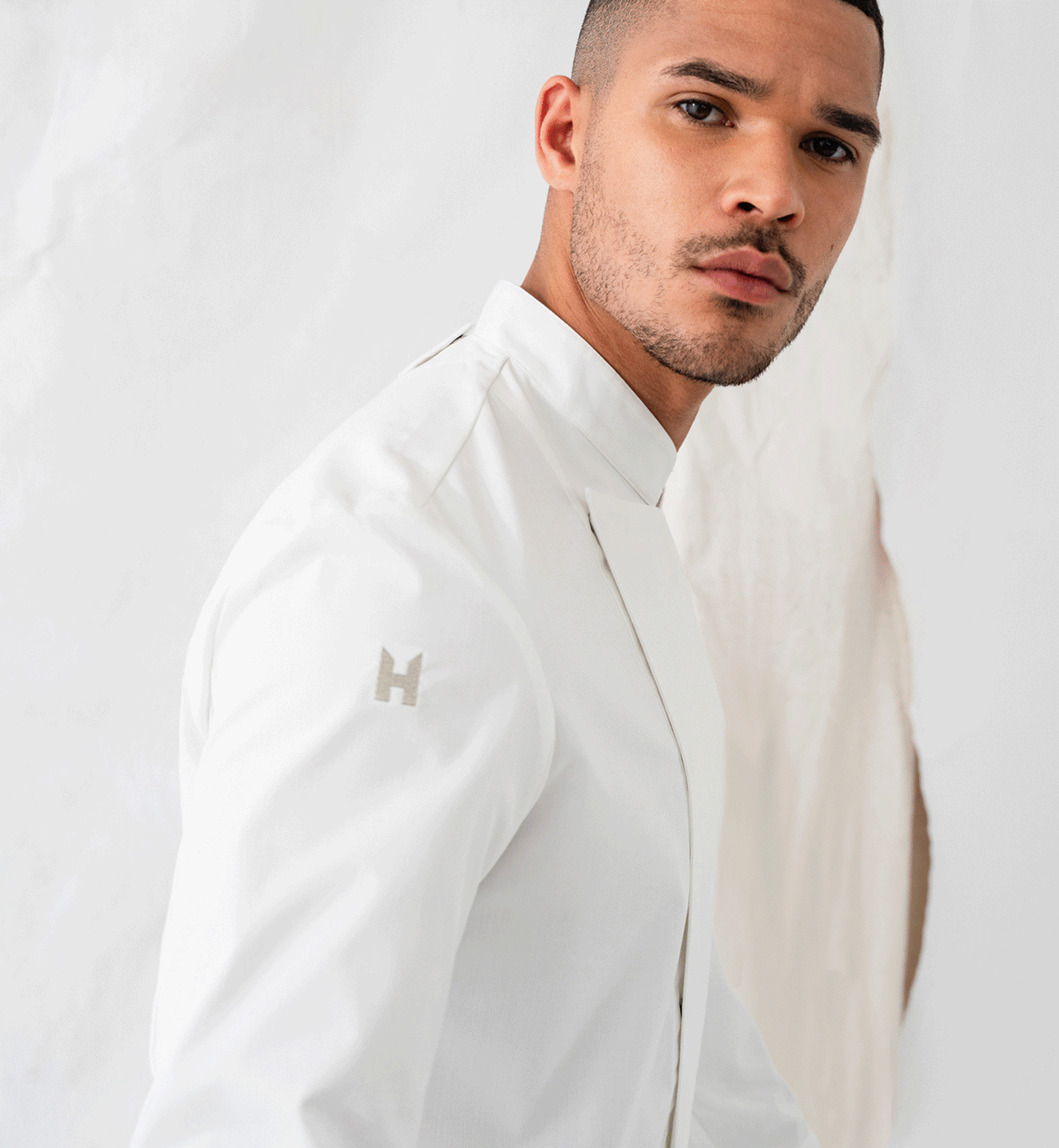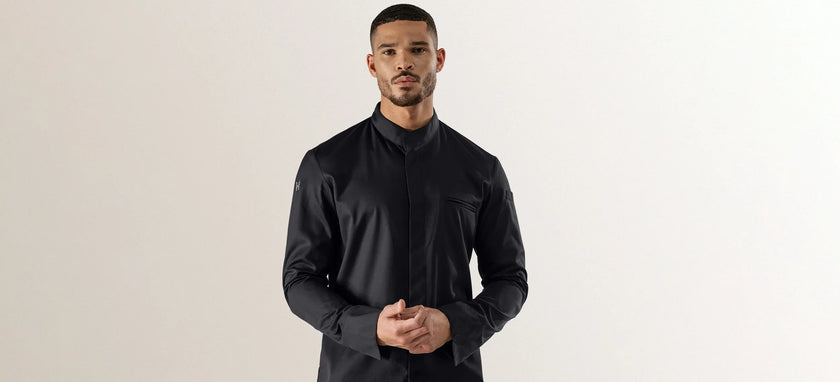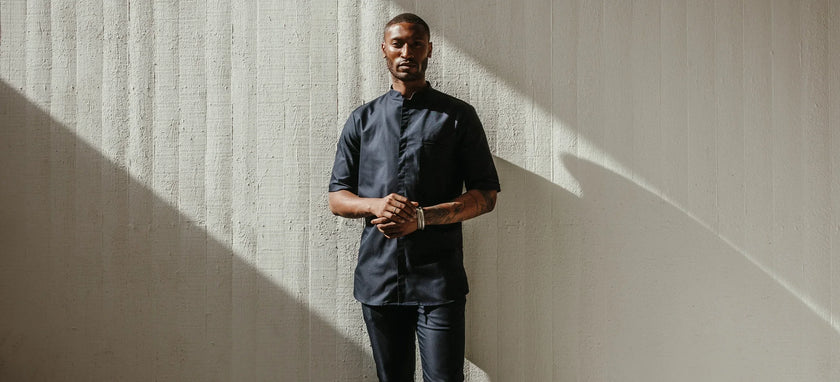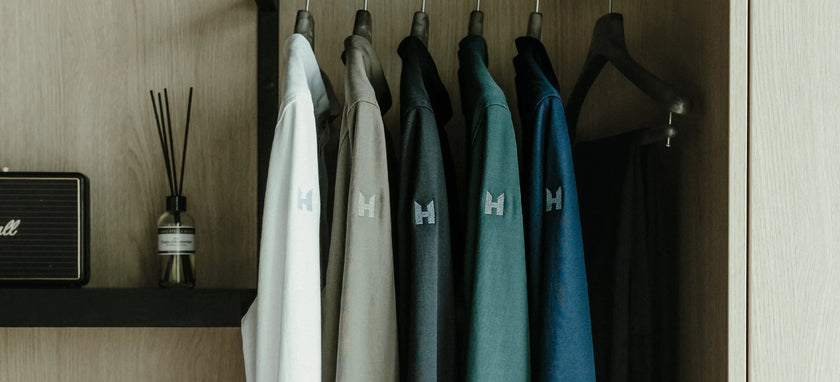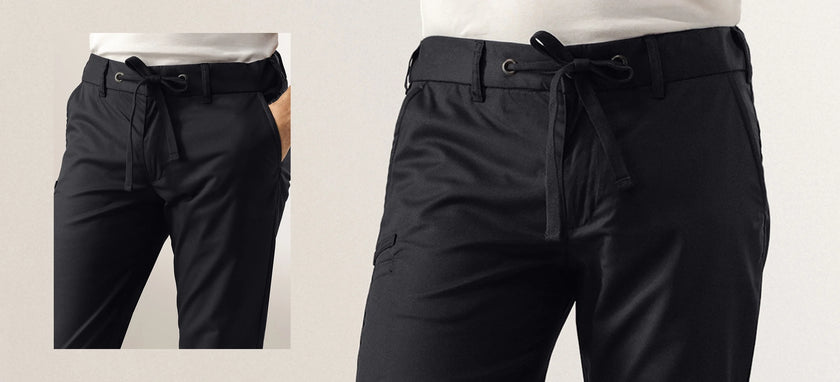Our iconic products in an undyed fabric. This collection is made from undyed rPET and lower impact cotton compared to conventional cotton, carefully selected for its lower environmental impact. By minimizing the use of optical whiteners, we have reduced our impact. This collection marks the beginning of Project Redefined—a series of initiatives dedicated to further minimizing our environmental footprint.
"We consider this collection a 'blank canvas,' giving us the opportunity to reevaluate the process and improve it, step by step." COO/CSO Marijn Blaauw
We invite you to explore the creation process of the Undyed collection. Below, you'll find an overview of the process and key figures, using the Chef Jacket Dave Undyed as an example.
The collection was born from a commitment to significantly reduce CO2 emissions, energy usage, and water consumption. Initially, we explored using completely unprocessed fabrics but found that this approach didn’t meet the high standards of performance and longevity expected by our chefs. Unfinished fabrics were prone to staining, making the garments less durable. Therefore, we minimized the use of bleach while introducing a finish that enhances fabric resilience without compromising on quality.
We then turned our attention to the material composition. Traditionally, our white chef jackets use virgin materials, but for the Undyed collection, we opted for a less impactful approach by using lower impact cotton compared to conventional cotton and Repreve polyester—a blend that not only upholds our commitment to high-performance workwear but also reduces our environmental footprint.
To quantify the improvements, we worked together with bAwear Score, who performed a streamlined Life Cycle Assessment (LCA) using the ReCiPe 2016 midpoint methodology. The primary data input was checked by an Expert from bAwear for correctness. We evaluated two key components in the calculations: dyeing and material composition considering the same product weight and supply chain.
Dyeing
By not dyeing our product Chef Jacket Dave, the impact is lower than if we were to dye it. Below are the percentage savings based on CO2 emissions, energy, and water consumption:
- CO2 emissions: 13.08% less
- Energy consumption: 11.14% less
- Water usage: 6.63% less
Material
By releasing our Undyed Chef Jacket Dave in a composition of lower impact cotton compared to conventional cotton and Repreve Polyester, the impact is lower than if we used virgin cotton and polyester. Below is the percentage difference based on CO2 emissions, energy, and water consumption:
- CO2 emissions: 169% less
- Energy consumption: 295.52% less
- Water usage: 6.1% less
Disclaimer
“The calculation of the bAwear score is based on the proprietary bAwear textile model and SimaPro software, as well as the input (primary data) provided by Le Nouveau Chef. In cases where primary data is lacking, secondary data is utilized. The secondary data are extracted from the EcoInvent® database and publicly available literature sources. When worst-case chosen secondary data is used, either in part or exclusively, the resulting calculations serve as indicators rather than precise figures. The calculations are conducted using the ReCiPe 2016 midpoint methodology. Data security is ensured by our partner, PRé Consultants, who have implemented ISO 27001:2013 standards.” For more information on background data, please contact support@bawear.eu


